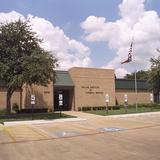- The mission of Eastfield College is to provide educational opportunities through high-quality instruction, services and programs in an environment conducive to student success in academic, technical, occupational, and continuing education. Our purpose is to develop responsible citizenship, to value diversity and cultural enrichment, and to be accountable and adaptable.
School Highlights
Eastfield College serves 16,505 students (19% of students are full-time).
The college's student:teacher ratio of 27:1 is higher than the state community college average of 23:1.
Minority enrollment is 81% of the student body (majority Hispanic), which is more than the state average of 74%.
Quick Stats (2025)
- Enrollment: 16,505 students
- In-state tuition: $3,015
- Out-state tuition: $4,695
- Student:teacher ratio: 27:1
- Minority enrollment: 81%
- Source: Integrated Postsecondary Education Data System (IPEDS)
Top Rankings
Eastfield College ranks among the top 20% of public schools in Texas for:
School Overview
The teacher population of 613 teachers has stayed relatively flat over five years.
Eastfield College
(TX) Community College Avg.
Carnegie Classification
Associate's Colleges: High Transfer-High Nontraditional
Baccalaureate/Associate's Colleges: Associate's Dominant
Institution Level
At least 2 but less than 4 years
At least 2 but less than 4 years
Institution Control
Public
Private, for profit
Total Faculty
613 staff
262 staff
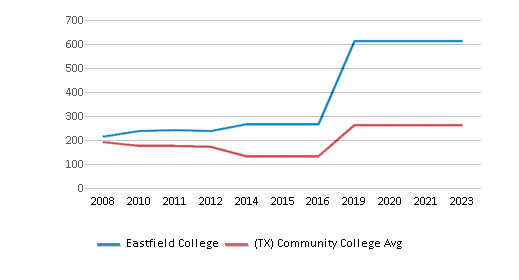
School Calendar
Student Body
The student population of Eastfield College has stayed relatively flat over five years.
The student:teacher ratio of 27:1 has stayed the same over five years.
The Eastfield College diversity score of 0.66 is less than the state average of 0.70. The school's diversity has stayed relatively flat over five years.
Total Enrollment
16,505 students
1,396 students
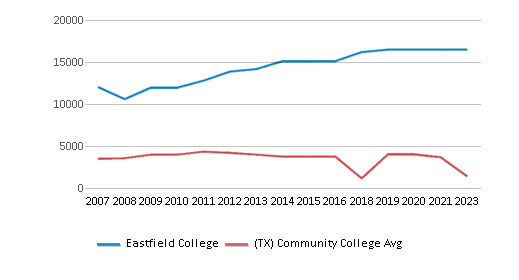
Student : Teacher Ratio
27:1
23:1
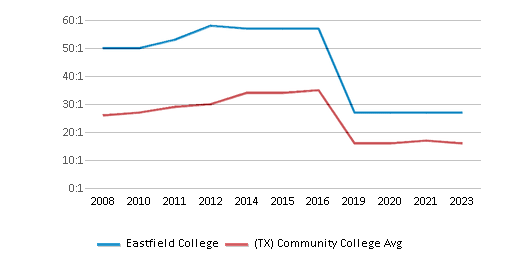
# Full-Time Students
3,157 students
890 students
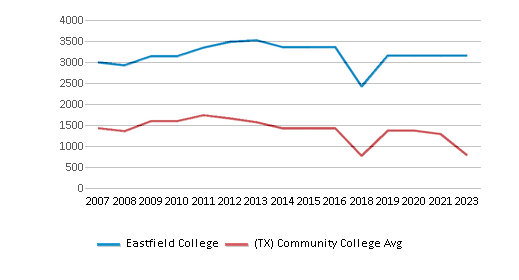
# Part-Time Students
13,348 students
4,022 students
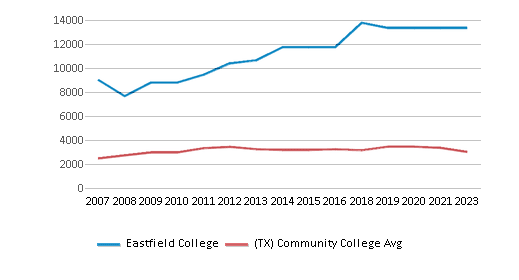
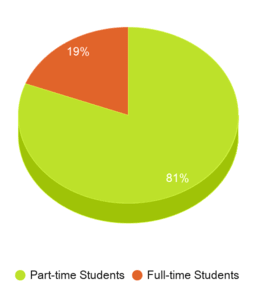

# Enrollment Undergraduate
836 students
403 students
# Full-Time Undergraduate Students
3,157 students
890 students
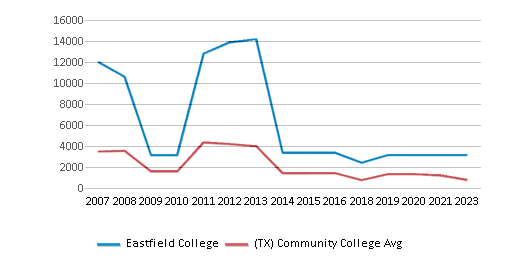
# Full-Time Graduate Students
n/a
40 students
# Part-Time Undergraduate Students
13,348 students
4,022 students
# Part-Time Graduate Students
n/a
47 students
Total Dormitory Capacity
n/a
252 students
% American Indian/Alaskan
n/a
n/a
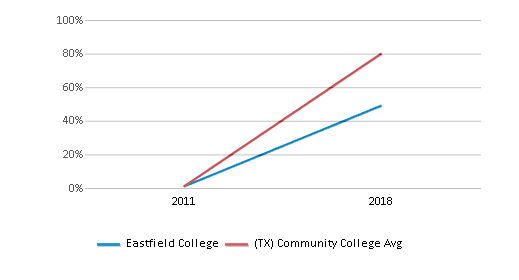
% Asian
5%
6%
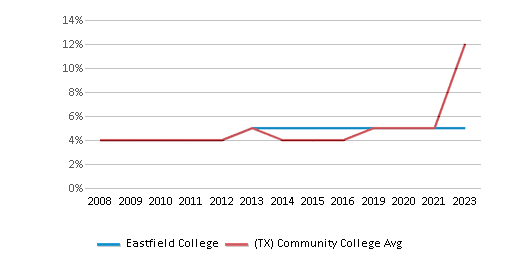
% Hispanic
52%
46%
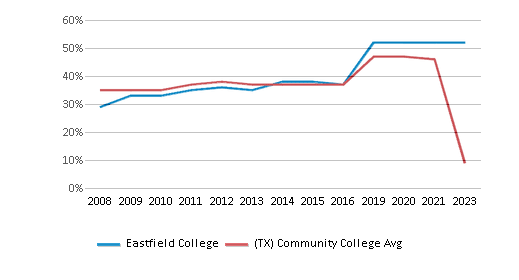
% Black
18%
14%
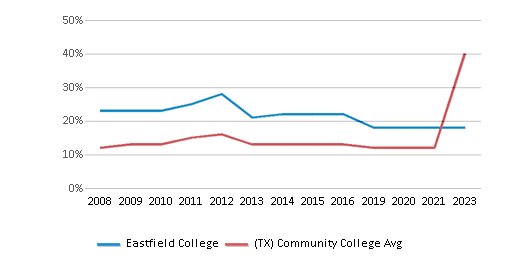
% White
19%
26%
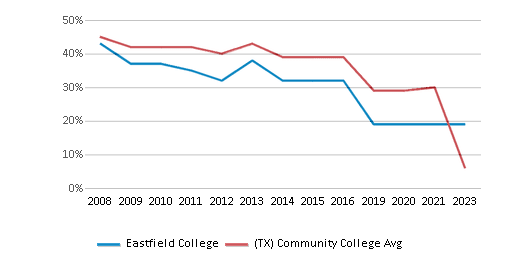
% Two or more races
2%
3%
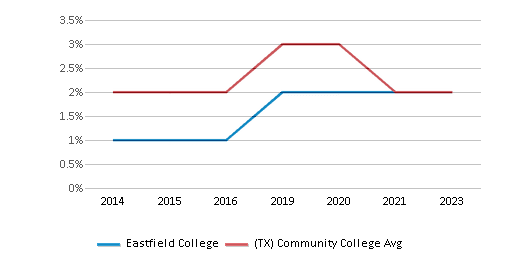
% Non Resident races
n/a
2%
% Unknown races
4%
3%
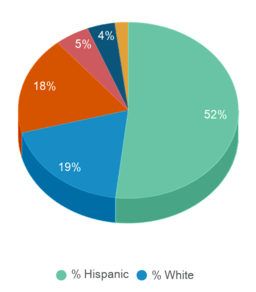
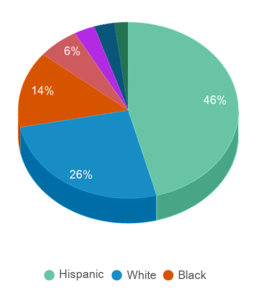
Diversity Score
0.66
0.70
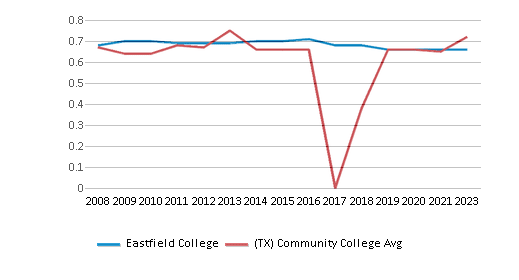
College Completion Rate (Students who graduate in less than 4 years)
3%
0.5469%
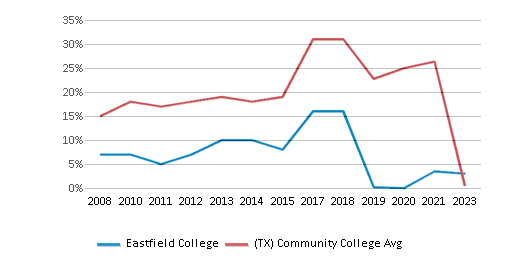
College Completion Rate (Students who graduate in 4 years or more than 4 years)
n/a
0.3357%
Average Graduate Earnings (10 Years)
$34,000
$34,600
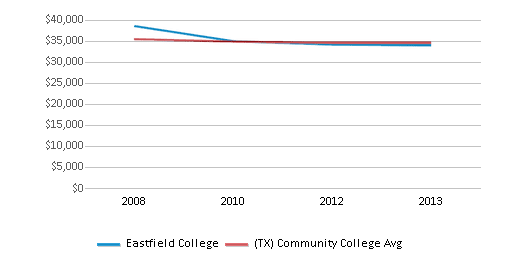
Tuition and Acceptance Rate
The public in-state tuition of $3,015 is less than the state average of $3,316. The in-state tuition has declined by 9% over four years.
The public out-state tuition of $4,695 is less than the state average of $5,750. The out-state tuition has declined by 10% over four years.
In-State Tuition Fees
$3,015
$3,316

Out-State Tuition Fees
$4,695
$5,750
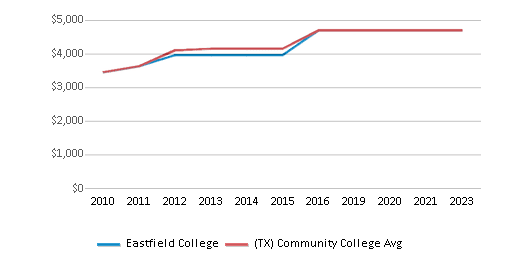
% Students Receiving Some Financial Aid
63%
84%
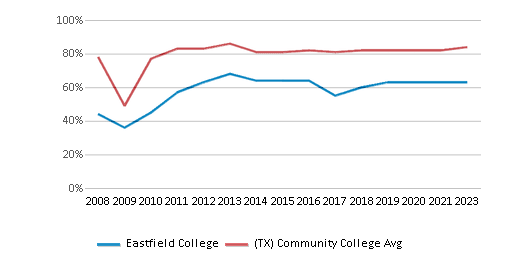
Median Debt for Graduates
$9,000
$10,500
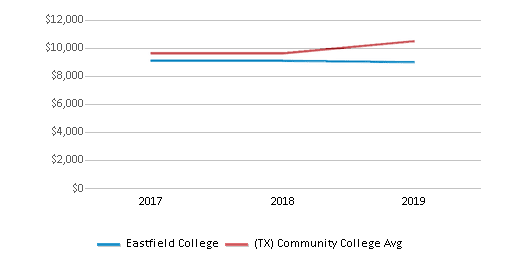
Median Debt for Dropouts
$5,500
$5,500
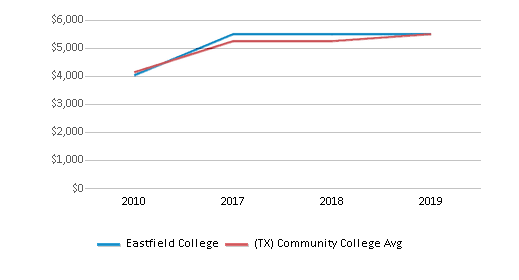
Acceptance Rate
n/a
81%
Source: 2023 (or latest year available) Integrated Postsecondary Education Data System (IPEDS)
School Notes
- Eastfield College has been serving the Mesquite, Garland and East Dallas community since 1970. Eastfield College works to provide educational opportunities through high-quality instruction, services and programs in an environment conducive to student success in academic, technical, occupational, and continuing education. Eastfield is part of the Dallas County Community College District. Sometimes known as the 'Educational Village' because of its unique architecture, it is located on 244 acres at the intersection of Interstate 30 and Motley Drive in Mesquite. Eastfield began operation in 1970 and has continually strived to assess the educational and cultural needs of students and the community in order to provide the finest in educational services. The Eastfield campus rises impressively from the plains of eastern Dallas County. Functional building clusters give students easy access to classrooms and labs and the overall aesthetic effect has earned Eastfield several architectural awards of excellence. The careful landscape planning includes terraced areas throughout the campus, a heated outdoor exercise pool, gymnasium, baseball field, jogging trail and tennis courts. In addition, the campus boasts an outstanding Performance Hall which serves the college and community for a variety of fine arts events. Eastfield College is accredited by the Commission on Colleges of the Southern Association of Colleges and Schools to award the associate degree.
Frequently Asked Questions
How much does Eastfield College cost?
Eastfield College's tuition is approximately $3,015 for In-State students and $4,695 for Out-State students.
What is Eastfield College's ranking?
Eastfield College ranks among the top 20% of community college in Texas for: Largest student body and Highest completion rates.
Recent Articles

Obtaining Your Bachelor's Degree at a Community College
Explore the evolving landscape of community colleges offering bachelor's degrees, addressing affordability, accessibility, and workforce needs.

A to Z of Community College Certificates and Courses
From business and healthcare to technology and skilled trades, the article showcases the breadth of options available to students seeking to enhance their knowledge, develop new skills, or pursue career advancement.

What is a Community College?
This comprehensive guide explains what a community college is, its history, and its role in higher education. It covers the types of programs offered, differences from four-year colleges, benefits of attending, and important considerations for prospective students, providing valuable insights for those exploring educational options.

